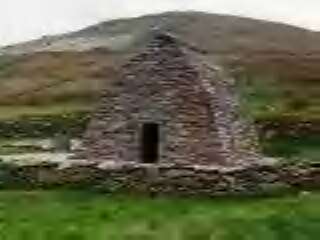Christianity in Ireland

Jesus Christ spent around 30 years in Palestine (what is now Israel) around the year 1 AD. His ministry have been extraordinary, for his followers spread rapidly across the known world with the message that he had taught. The early missions around the eastern Mediterranean are chronicled in the book of Acts in the Bible, as well as the letters of St Paul. Despite widespread persecution under the Romans, during which time thousands of Christians were thrown to the lions or crucified, the Roman Empire ultimately adopted Christianity as its religion. From the Mediterranean it spread northwards into Gaul and it reached Ireland around the late 300s or early 400s.
The first recorded missionary to Ireland was Palladius, who was probably from Gaul [France]. He was sent by the Pope to be bishop to the "Irish who believe in Christ". Patrick himself stated that Palladius' mission was a failure. However, other historical documents from outside Ireland indicate that the mission of Palladius was very successful, at least in Laigin (Leinster), and that he set up a number of churches.
Tradition says that Palladius' visit to Ireland was in the year 431.
St Patrick Perhaps the most famous missionary to Ireland was St Patrick. However, a small point of caution is needed here It is widely believed by historians that the missions of St Patrick were embellished and enshrined by Patrick's monastery at Armagh in their (ultimately successful) bid for primacy over the church in Ireland.
In creating what is referred to as the 'Cult of Patrick', Armagh exaggerated the importance of Patrick and diminished the importance of the other missionaries, possibly even attributing some of the work of these other missionaries to Patrick. That said, St Patrick is such an important part of Irish culture that it would be a mistake to ignore him.
We know very little for certain about Patrick. According to his own "Confession", he was born in Roman Britain - probably near Hadrian's Wall in northern England - the son of a wealthy official. His mother may have come from Gaul [France]. When he was 16, sometime in the early 400s, he was kidnapped by an Irish raiding party and sold into slavery in Ireland. As Roman Britian collapsed, it was increasingly common for Irish, Pict and Saxon raiders to pillage its coastal settlements and it seems that Patrick fell victim to one of these raids. Patrick worked as a slave for 6 years tending sheep, traditionally believed to be on Slemish Mountain, county Antrim, but it seems possible that he was, in fact, somewhere near the Atlantic Ocean in county Mayo or Sligo.
Patrick says in his Confession that he discovered God during his time of captivity, and took to praying a hundred times a day. After 6 years, Patrick managed to escape from captivity, walked the 200 miles to the east coast and managed to negotiate passage aboard a trading ship to Gaul [France]. There, he probably trained to be a Christian Priest and spent time in Auxerre. He then received prophetic dreams where he heard the people of Ireland near the 'western sea' call him to come and walk among them again. He then travelled to Ireland as a missionary, and it seems that he never left. The year traditonally given is 432, but it seems more likely to have been around 460
Patrick concentrated his work in north-east Ireland, and his first church was at Saul, near present-day Downpatrick. He preached to the Kings and their households and met with varied levels of success. One of his methods was to 'Christianize' the Celtic Pagan festivals. For example, Patrick reputedly lit an Easter bonfire on Slane Hill near the Hill of Tara while the King was having his own Pagan bonfire there. The King was enraged, but he took the opportunity to preach and managed to make some converts.
He is famously said to have used the 3-leaved Shamrock to explain the concept of the Trinity: God as the Father, Son and Holy Spirit (although some believe this story is a myth). Patrick died in Ireland and is traditionally believed to be buried on the Hill of Down in Downpatrick, county Down. A stone marking the traditional burial spot was added in 1901 and the site is now a popular tourist attraction.



0 Comments:
Post a Comment
<< Home